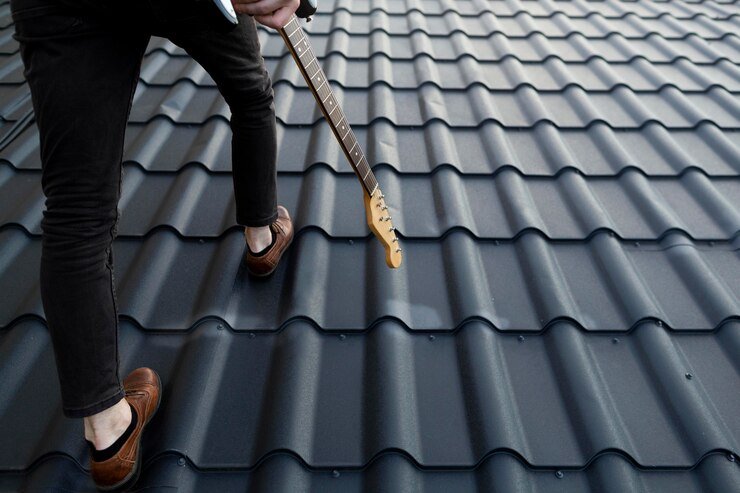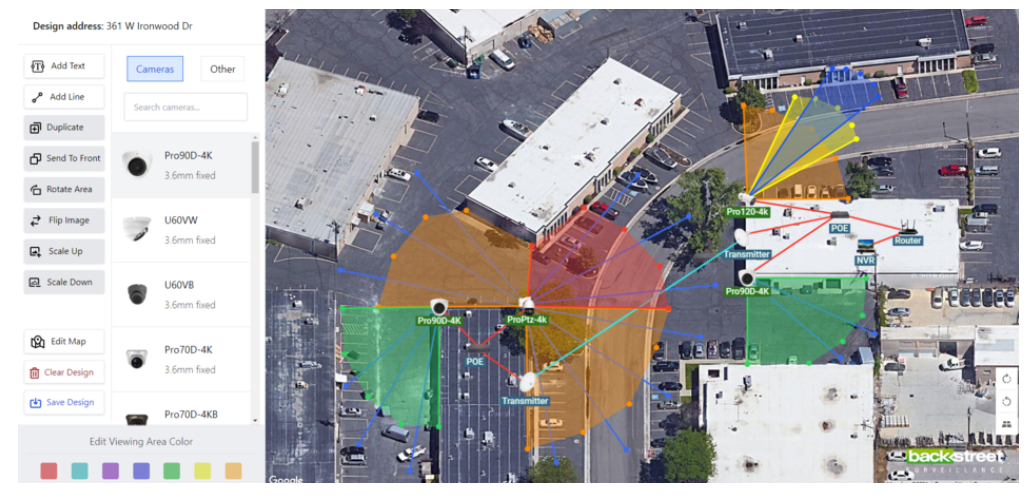Table of Contents
ToggleWhat is Metal Roofing?
Metal roofing is famous for residential and commercial buildings due to its durability, energy efficiency, and aesthetic appeal. It is made from various metal materials, including aluminum, copper, steel, and zinc, and comes in different styles, such as standing seam, corrugated, and metal shingles. Metal roofs are known for their long lifespan, resistance to harsh weather conditions, and low maintenance requirements.
Benefits of Metal Roofing
- Durability: Metal roofs can last 40-70 years, depending on the material. They are resistant to cracking, shrinking, and eroding.
- Weather Resistance: Metal roofs can withstand extreme weather conditions, including heavy rain, snow, hail, and high winds.
- Energy Efficiency: Metal roofing reflects solar radiant heat, reducing cooling costs by 10-25%.
- Environmental Impact: Metal roofs are often made from recycled materials and can be recycled at the end of their lifespan, making them an environmentally friendly option.
- Aesthetic Appeal: Metal roofing is available in various colors, styles, and finishes, allowing homeowners to achieve the desired look for their property.
Types of Metal Roofing
- Standing Seam: Features vertical panels with seams that are raised above the level of the roofing panel. It is known for its sleek, modern appearance and excellent water resistance.
- Corrugated Metal: Characterized by its wavy pattern, this roofing is commonly used for agricultural and industrial buildings.
- Metal Shingles: These mimic the appearance of traditional shingles but offer the benefits of metal roofing. They are available in various designs, including slate, tile, and wood shake.
Installation and Maintenance
Metal roofing installation requires specialized skills and tools, so hiring a professional roofing contractor is recommended. Proper installation ensures that the roof performs optimally and has a long lifespan. Maintenance for metal roofs is minimal, usually involving periodic inspections and cleaning to remove debris and prevent potential damage.
Extra Knowledge of Metal Roofing
Metal roofing offers numerous benefits and features, making it an attractive option for various building types and climates.
Fire Resistance
One of the significant advantages of metal roofing is its fire-resistant properties. Metal roofs are non-combustible, providing an added layer of protection against fire hazards. This makes them a preferred choice in areas prone to wildfires or for buildings where fire safety is a top priority.
Lightweight Material
Despite its durability and strength, metal roofing is relatively lightweight compared to other roofing materials like tile or slate. This can reduce the structural load on a building, which is particularly beneficial for older structures or buildings with less robust foundations.
Quick Installation
Metal roofing systems often come in large panels or sections, which can be installed more quickly than smaller, individual shingles. This can reduce labor costs and shorten the overall installation time. Some metal roofing products are also designed for easier installation, allowing for a seamless and efficient process.
Reflectivity and Emissivity
In addition to reflecting solar radiant heat, many metal roofing materials are designed with high emissivity, which can efficiently release absorbed heat. This dual capability helps to maintain a more relaxed building interior, contributing to overall energy savings and improved indoor comfort.
Versatility in Design
Metal roofing is highly versatile in terms of design. It can be painted or coated in a wide array of colors to match the desired aesthetic of a building. Additionally, metal can be formed into various shapes and profiles, allowing for creative architectural designs and custom appearances.
Noise Insulation
Contrary to common belief, metal roofs are not inherently noisy. Modern metal roofing systems often include solid sheathing, insulation, or other materials that dampen sound. Proper installation ensures that metal roofs can be as quiet as any other roofing, even during heavy rain or hailstorms.
Cost-Effectiveness
While the initial cost of metal roofing can be higher than some traditional roofing materials, its long lifespan, low maintenance requirements, and energy-saving benefits make it a cost-effective choice in the long run. The durability of metal roofing also reduces the need for frequent repairs or replacements, further enhancing its cost efficiency.
Compatibility with Solar Panels
Metal roofs are an excellent choice for buildings with solar panel installations. The durability and strength of metal roofing provide a stable base for mounting solar panels. Additionally, metal roofing’s long lifespan means it will not need replacement before the solar panels, ensuring a consistent and reliable roof for the solar panel system’s life.
Recyclability and Sustainability
At the end of its life, metal roofing is 100% recyclable. This makes it one of the most environmentally friendly roofing options available. Using recycled metals in manufacturing metal roofing materials also contributes to sustainability efforts, reducing the demand for virgin raw materials.
Metal Roofing Innovations
Advancements in technology have led to the development of innovative metal roofing solutions. For example, some metal roofs are designed with integrated solar cells, combining the benefits of metal roofing with renewable energy generation. Others feature specialized coatings that enhance their reflective properties, improving energy efficiency.
FAQs
Q: How long does a metal roof last?
A: Metal roofs can last 40-70 years, depending on the material and proper maintenance.
Q: Are metal roofs energy-efficient?
A: Metal roofs reflect solar radiant heat, reducing cooling costs by 10-25%.
Q: What types of metal are used in roofing?
A: Common metals used in roofing include aluminum, copper, steel, and zinc.
Q: Can metal roofing withstand harsh weather conditions?
A: Metal roofs are highly resistant to extreme weather conditions, including heavy rain, snow, hail, and high winds.
Q: Is metal roofing environmentally friendly?
A: Yes, metal roofing is often made from recycled materials and can be recycled at the end of its lifespan.
Q: What styles are available for metal roofing?
A: Metal roofing comes in various styles, including standing seam, corrugated, and metal shingles, allowing for various aesthetic options.
Conclusion
Metal roofing is an excellent choice for those looking for a durable, energy-efficient, and aesthetically pleasing roofing option. Its long lifespan and minimal maintenance requirements offer great value for homeowners and business owners alike.
Metal roofing continues to evolve with advancements in technology and materials, offering an ever-expanding array of benefits for modern buildings. Its durability, energy efficiency, aesthetic versatility, and environmental friendliness make it a top choice for homeowners and builders alike. For new construction or roof replacement, metal roofing is a superior option.
“ Which of the Following is True of Protecting Classified Data”
Harnessing the Power of Generative AI Overview for Effective Project Management










